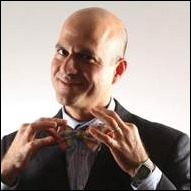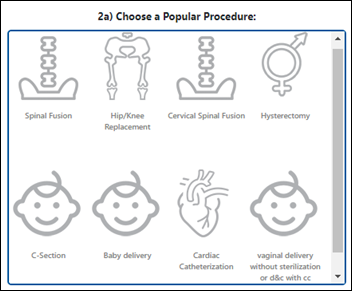Marilee Benson, MBA is president of Zen Healthcare IT of Costa Mesa, CA.

Tell me about yourself and the company.
My husband Jim and I founded Zen after spending 25 years in healthcare IT. Our goal from that experience was to simplify interoperability, because we had learned how difficult it can be. Zen is our second company in healthcare IT. We sold the first one to WebMD in 1999. We’re one of those rare couples who love to work together and we thrive doing it. A lot of people think we’re crazy, but we love it.
The best part about Zen is that we’re made up of some of the best and brightest people who work in healthcare interoperability. We have a good mix of more experienced folks who have gray hair and the younger up-and-comers. That mix of experience and innovative new ideas is important when working on the kinds of problems that we work on every day.They are smart and dedicated, and we are laser focused on giving our clients the best possible experience. You will frequently hear our clients say that we are their favorite vendor to work with, and for us, that’s one of the most important aspects of what we do. We don’t take that for granted and we work hard to make that a reality.
What kinds of interoperability projects are customers working on?
We’ve certainly seen in the last year or so a big increase in the National Trusted Exchange-type implementations, such as IHE exchange and federated query and response. We’ve also seen an increase in FHIR-related projects, although typically we’re translating FHIR to the older standards. We may do a FHIR to IHE translation, or FHIR to proprietary API.
I’m excited about where we’re headed with FHIR and more API-based exchange, but we might also pick up a flat file and turn that into HL7. That represents where we are with interoperability today – it’s just extraordinarily complex. We have new emerging standards, but the old standards don’t die. That’s our challenge.
What impact are you seeing from ONC and the Cures act?
That will drive better adoption of API-based exchange, but we will need middleware tools that help bridge the gap from where we are today to where we are trying to go. Beyond the technical side, ONC is focused on information blocking, and its rulemaking process is helping push the business side, which is often the bigger problem. We can come up with technical solutions, but we need to have people on both sides of the transaction who are willing to share that data.
The other area is patient access. That has tremendous potential, but there’s been a lot of fear, uncertainty, and doubt for healthcare organizations to open up for better patient access to data.
I’m excited about the business drivers that hopefully will once and for all ensure that sharing data is the standard way that healthcare is delivered, as opposed to that project that everyone’s always trying to work on, but never quite gets there.
What happened to the debate a couple of years ago about how vendors will approve who can connect to their systems via APIs, who owns the data, and who makes money from its exchange?
The information blocking rules are helping us get over that problem. I agree with you 100% that it has been a huge problem. It takes time to change people’s minds. But if you aren’t engaging in API exchange of information and opening up, both at a vendor level as well as in healthcare organization level, you’re going to have some explaining to do. You will need to have good reasons why you’re not doing it. That will apply a lot of pressure.
The other thing that will help is the tension that we have between the HIPAA minimum necessary standard versus information blocking. We are starting to get some direction from ONC around not letting minimum necessary be the reason that people aren’t exchanging data and clarifying some of those rules to address some of the legal concerns.
What unusual examples of interoperability have you seen?
We absolutely get to work on some pretty creative projects. Some of those things might include just moving data around within an individual organization’s suite of applications. We often think of data leaving the four walls and going over to another stakeholder. But often organizations are having trouble even moving data around within their own systems to leverage the data they are collecting to create a positive impact on patient outcomes. For example, you might pull data out of an EHR and several other systems and create a dashboard for certain types of patients, such as chronically ill patients. Those are fun projects to work on.
We also do a lot of work supporting health information exchanges across the country, and we’ve seen a lot of opportunity for health information exchanges to make a difference. For example, in the time of COVID, you can leverage the fact that you’ve got a data aggregator regionally that can help providers more quickly see whether, for example, a COVID test has been ordered and what the result was. That will obviously be extended to understanding the vaccine administration process and how we’re doing as a population. So the diversity of use cases for health information exchange is extraordinary.
We also have many great analytics vendors and analytics tools, but many of them still struggle with getting the data. So a lot of our work is in that area, helping get data into a format so that the analytics vendors can take that in and use that data for improved population health.
One theory of why Haven shut down was that it was starved of data by health systems that saw the company and its owners as adversaries. Are companies from outside of health IT surprised that they can’t get data that they thought would be readily available?
Haven was on my list of least-surprising news. I use HIStalk as my primary source of news, and when I saw your headline, I said, OK, that’s not a surprise. The problem is multifaceted. There’s the problem of the sharing of the data, and hopefully some of the new rules will help with that. But then there’s also the quality of the data. Even if you can get the data, there is a tremendous amount of work to be done to be able to leverage that data effectively from an analytics and population health point of view. Some of been around for a long time and we as an industry must do better at fixing them.
That includes patient identity and provider identity. Those are key pieces of information in a healthcare message, yet we struggle as an industry to manage them, using expensive tools that have a lot of management and maintenance. The industry is talking about these problems, but we still have a lot of work to do to fix them.
Does bringing in someone else’s data involve constant monitoring for inconsistent editing and storing of what seem like straightforward elements, such as blood pressure?
It has gotten better, but we still have a lot of work to do. ONC recently announced an effort around things like address normalization, which is great, but it sets you back on your heels to realize we’re talking about something as fundamental as that. Some of the clinical data normalization has gotten better with the evolution of the standards. FHIR in particular is doing a good job of being more specific in terms of the sharing of targeted clinical data.
How has the pandemic changed interoperability demand?
The two big things that we saw happening in the spring of last year were public health reporting, particularly with lab results, and telehealth. Telehealth was a big growth area for us last year.
I was a bit surprised that we had as much work to do in the public health side as we did. You might assume that we have public health registries, so data must be flowing, but in reality, there was a lot of work that had to be done. Many of the health information exchanges across the country were helping scale lab reporting, particularly to the public health agencies.
Integrating telehealth with hospital systems and provider EMR systems was a big area. I’m hopeful that telehealth is an area that we’ve proven has a has a bigger role to play in future healthcare delivery in the future and it isn’t just a blip. From an access to care perspective, telehealth has an important role to play.
Tracking pandemic-related hospital status, cases, deaths, and vaccination status is being done in some cases with primitive technology such as emailed worksheets and probably even fax machines. Are you finding that you have electronic provider data that those entities need that they can’t process electronically?
That is absolutely a problem. We do more work at the state level than the federal level, but it was surprising that even in states like California we had problems with the lab registry. Now we’re having trouble with the immunization side, where the right systems are not in place. This is an absolutely critical area that we have to invest in over the next several years. We simply cannot afford to not have that public health reporting infrastructure be modern and ready to tackle the next healthcare crisis that comes along.
Is it easier now that hospitals are using a reduced number of EHRs and other systems?
We still have a lot of ambulatory vendors even with consolidation. I’ve seen that vendor landscape pendulum swing in 32 years in healthcare IT and 40 years in healthcare, but the most important thing we need to do is make sure that our data sources are broader than just what’s happening in a hospital setting. We need better data from long-term care facilities and ambulatory care facilities. Behavioral health has been a big challenge in terms of effective health information exchange. We have a number of initiatives that address those issues, working with some of our HIE partners. If you look at the community and who is really impacting a healthcare consumer, it is a very diverse group of folks, including a lot of social service agencies. All of that data is critical for improving outcomes, particularly with those communities that need it the most.
After all those years in the industry, what aspects of it are you enthusiastic about?
We are entering a golden age. We are overcoming some of the last hurdles, from a business perspective. Even though I complain about the proliferation of standards, the positive side of that is it gives us an awful lot of tools in the toolbox to address specific healthcare workflows and use cases. We have a lot of talent coming in from an engineering, a lot of younger folks coming into this part of the space who enjoy problem solving. I’m really excited, and while I realize there are problems that have been around for a long time, we have a lot of great minds working on them. There have also been a lot of advances on the infrastructure side that give people options. We are going to be able to accomplish more in the next five years than we’ve accomplished in the last 20.
Do you have any final thoughts?
Zen has been a pretty well-kept secret for years. To help fuel our growth over the next couple of years, we’re going to be working hard this year to share some of our clients’ successes as a testimony to the value that we bring to our clients and to the industry. We’re going to continue to grow and evolve our solutions to keep up with what’s happening in the industry, with a continued focus on FHIR, API, and National Trusted Exchange. But the most important thing we’re going to be doing is continuing that laser focus on making interoperability easier for clients so that they can stay focused on what they do best. Our best day is when one of our clients makes a difference in the life of their patients or in the healthcare consumer. In the last year, that has never been more important. It’s an exciting time to be in this business and we will continue doing the best we can for our customers every day.




















































Merry Christmas and a Happy New Year to the HIStalk crowd. I wish you the joys of the season!